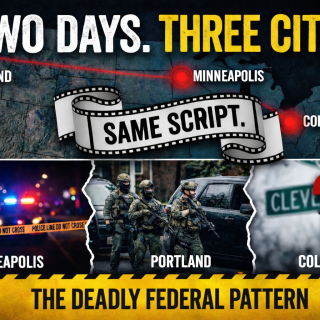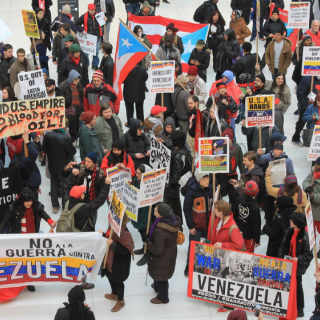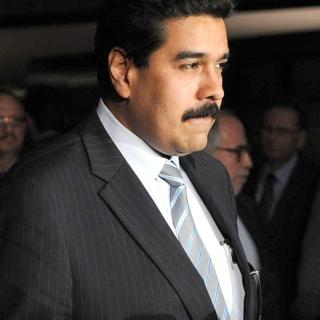Advertisement
In this essay, I continue my comparative analysis of Columbus, Ohio, among other North American “we’re a big city now” cities (in the words of one City Councilor). My detailed focus began with “Columbus, meet a ‘real’ city: Toronto,” Busting Myths, Columbus Free Press, Oct. 1, 2022.
To escape the sanctioned mayhem of Michigan “The Game” weekend in and around my University District home, with Columbus Police either or both ignorant of the law or unwilling to enforce it, especially on game days, and OSU aiding and abetting illegality among students and alumni families—much more like a college town, not a 900,000 person city, my wife and I spent November 24-27 in Pittsburgh. Only a three hour drive to the east, Pittsburgh is a revealing, instructive set of contrasts with Andy Ginther’s unique “Opportunity—for a few--City.”
The powerful, often stark opposites appear immediately. Western Pennsylvania is geographically beautiful, punctuated by hills and waterways. Most visitors to Pittsburgh enter its historic center through the landmark Fort Pitt Tunnel under towering Mount Washington overlooking The Point or Golden Triangle where the twin rivers form the Ohio River. Long the Gateway to the West, it linked Pittsburgh to Cincinnati, St. Louis and the Mississippi.
My then-fiancée’s reactions on her first visit to my home city in 1969 as we emerged from the tunnel to view the night-time illuminated downtown skyline are etched in our memories. The historical downtown was literally elevated with high-rises after World War II as the industrial giant began its continuing transformation from industrial to “new urban” and high tech capital.
As we drove on Thanksgiving Day to our boutique hotel, recently redeveloped from the longstanding Syria Mosque performance center (never a site of controversy) across the street from the University of Pittsburgh’s Cathedral of Learning, I was struck again by the city’s beauty, general cleanliness--a great change from the polluted city of my youth and from contemporary Columbus; repaved streets and sidewalks; bicycle lanes; and strikingly electric scooter locked sites and marked locations so unlike Columbus’ sidewalk litter.
Pittsburgh was famous for its potholes especially on its defining hilly streets. That is now commemorated by Pittsburgh Pothole Filler dark chocolate0dunked popcorn as an edible memento. It is delicious.
We followed the public transit system’s EV buses up and down the streets. Many landmark buildings have been redeveloped into public and private functioning structures—like our hotel, museums, athletic fields—rather than being torn down like Columbus landmarks.
Also unlike Columbus, public art—without fake $250,000 “master plans”--dots the city. Local NPR announcers speak clearly and grammatically. In the place of non-stop repetition of local and national programs, music is part of the news station’s contents. The daily newspaper prints daily.
The centrally-located University of Pittsburgh (Pitt), Carnegie-Mellon (CMU), Duquesne, Chatham, Carlow, and Point Park university areas are well integrated with the city itself. Singly and jointly, they stand in marked contrast to the University District and OSU’s city-surrounded but increasingly walled-off land grant campus with its city tax-supported “innovation districts.” Greatly expanded from its technology and engineering origins, especially into the arts and urban-regional linkages, Carnegie Mellon ranks much higher than OSU.
Unlike Ohio State, Pitt, CMU, and Duquesne local scholars and graduate students document and write the history of the city, including colonial and revolutionary eras, immigration, industry, labor, economy and business, and diverse groups and areas. The city and region are filled with interconnected professional and amateur historical and landmark organizations. The establishment of the Heinz Pittsburgh History Center and Smithsonian-affiliated museum in the last two decades derives from local philanthropy linking urban and national interests and institutions. Unlike the Wexners, these families provide the works of art to fill their named structures.
Unlike Columbus, Ohio, which in the 21st century has a larger population than the once “Gateway to the West,” international “Steel City,” and new “post-industrial city” of the 1960s and 1970s, Pittsburgh has significant histories and identities. Its diversities have always been central. Although there are other Pittsburg(h)s in the US, no one needs to state Pittsburgh, Pennsylvania, to gain basic recognition.
The contrasts only begin with geography and name recognition. The site of the future world city is a natural formation. Almost a century older than the future capital of Ohio, Pittsburgh’s roots lay, first, at the confluence of the Alleghany and Monongahela Rivers to form the Ohio River, a major path of settlement to the Old North West and beyond, in southwestern Penn’s Woods, the future colony and state of Pennsylvania. These were and are significant bodies of water—crossed by bridges old and new--unlike the Scioto and Olentangy.
First the site of Indigenous Peoples’ settlements, Pittsburgh became a trading post, and by the mid-eighteenth century the site of Fort Duquesne during the French and Indian Wars and not long after Fort Pitt during the War for Independence. In other words, Pittsburgh has natural physical and historical reasons for its existence, not the reward to a government surveyor at the end of the eighteenth century.
With steady domestic, international, and Black migration, Pennsylvania’s second- city grew rapidly with commercial, trading and shipping, early and then industrial age economic expansion from metals to food production, glass, artisanal production, and after the mid-nineteenth century, revolutionary industrialization culminating in steel and accompanying labor organization. The Steel City was also a banking and commercial capital, and a cross-cultural cultural center. It has long held international distinction.
Unlike Columbus, this includes its major arts and cultural institutions and places in American and international cultural history across ethnic, race, gender, and generational lines, and across arts and cultures, times and places.
More like Cleveland and Cincinnati, and to a lesser extent Dayton and Toledo, Pittsburgh’s economic elites shaped the city historically, both for better and for worse. The Carnegies, Mellons, Fricks, Heinz’s, and others used a portion of their surplus wealth to shape parks, neighborhoods, private and public architecture, and especially endow national and international distinguished cultural and educational institutions.
These include the noteworthy and ever-stronger Carnegie Museums of National History and Art; Carnegie Mellon University (formerly Carnegie Institute of Technology); University of Pittsburgh with its Cathedral of Learning, Heinz Chapel, and Steven Foster Memorial (private until affiliation with the state in 1960s) and University of Pittsburgh Medical Center; Pittsburgh Symphony; Frick Museum; Pittsburgh Playhouse; among others. Pittsburgh is long a major center for ethnic and racial arts including literature, song, and performance.
These institutions are all widely recognized on their own merits, unlike COSI’s US News and World Report’s standing based on its local supporters “votes.”
Many clusters in the long-standing central cultural, education, and medical districts of Oakland and neighboring areas are well-integrated into the central city, unlike Ohio State University. Pittsburgh’s many public and private institutions, both secondary and post- secondary, are actively engaged in the life of the city. Both the Salk and Sabin polio vaccines were developed at the University of Pittsburgh Medical Center. As a kindergartner in the mid-1950s, I was in the clinical trials for both.
Unlike Columbus’s Ohio State, typically highly-ranked Pitt sports teams do not substitute incompletely and immaturely for major league professional baseball and football, and the multiple championship Penguins hockey team. Rather than the juvenilia of collegiate Buckeyes led by mascot Brutus Buckeye and the BDBTL, OSU’s Best Damned Band in the Land marching band, the Pittsburgh Pirates and Steelers win many championships, growing from the inner-city park-like Forbes Field of my youth, the legendary 1960 World Series championship, and many Steelers’ championships. Along with the Pitt Panthers, they are now in their second generation of downtown riverfront stadiums and indoor civic arenas, all in the city center by the rivers. Nearby are world-class science center and planetarium.
To a meaningful degree, Pittsburgh admits to and struggles sometimes more or less successfully with time, change, and complicated, contradictory histories and transitions. Always a site of social and cultural conflicts, the city confronted the epochal clashes of monopoly capital and organizing labor in the late 19th and early 20th century, and again during the Great Depression, without succumbing. It survived admittedly corrupt city administrations and fought to reestablish democratic city and country government and has moved toward greater representation and degrees of equity and inclusiveness.
Pittsburgh continues to deal, with steps forward and sometimes back, with the epochal transitions from steel and big manufacturing and its consequences, to a more diverse higher technology, white collar, and service economy, and its urban, suburban, and exurban consequences. The transformations go on. Compared to Columbus, Ohio, Pittsburgh comparatively is a more mature city.
Frank admission, halting but moving steps, and continuing debates distinguish the former Steel City’s multiple paths compared to other regional municipalities.
Longer lasting and more intense than the OSU-Michigan football rivalry, the Pitt-Penn State conflict’s fierceness is never marked by the mayhem in Columbus (far more than in rival Ann Arbor). No one in either campus area crosses out P’s as OSU (but not Michigan) fans deface public signage at least temporarily and illegally each season.
Among my earlier explorations, see the following, all on website:
“Columbus’ identity crisis and its media,” Columbus Underground, July 23, 2021
“Columbus City Government is Undemocratic and Disorganized: It’s 2021 and we need a revolution in this city,” Busting Myths, Columbus Free Press, Nov. 20, 2021
“Columbus searches for its Downtown with historical, urbanist, and developers’ blinders,” Busting Myths, Columbus Free Press, Dec. 22, 2021
“Columbus, Ohio, searches to be a city: The myth of the Columbus Way,” Busting Myths, Columbus Free Press, Jan. 9, 2022
“Is Columbus really a City?” Busting Myths, Columbus Free Press, Apr. 7, 2022
“Columbus isn’t Cowtown or Silicon Valley Heartland; It’s the lawless wild-wild-Midwest,” Busting Myths, Columbus Free Press, April 20, 2022
“The Columbus Way versus the rights of residents, Part One,” Busting Myths, Columbus Free Press, June 21, 2022
“The Columbus Way versus the rights of residents, Part Two, Busting Myths, Columbus Free Press, June 24, 2022
“The Columbus Way versus the rights of residents, Part Three,” Busting Myths, Columbus Free Press, June 27, 2022
“The Columbus Way versus the rights of residents, Part Four,” Busting Myths, Columbus Free Press, June 30, 2022
“Remaking the City of Columbus for the 21st or is it the 20th century?” Busting Myths, Columbus Free Press, July 5, 2022
“Is Columbus the corruption capital of a corrupt state? Mismanagement, no management, and corruption in the 2020s,” Busting Myths, Columbus Free Press, July17, 2022
“Mr. Mayor and City Council: May I introduce you to the city of Columbus? Beyond the Short North and the Scioto River Bank, there is a diverse complicated city,” Busting Myths, Columbus Free Press, July 31, 2022
“Still searching for Downtown: ‘Ideas considered for Downtown plan,’” Busting Myths, Columbus Free Press, Aug. 14, 2022
“Columbus, meet a ‘real’ city: Toronto,” Busting Myths, Columbus Free Press, Oct. 1, 2022
“The City of Columbus and The Ohio State University: Two peas in a pod, one bigger than the other, relatively speaking, but so much the same. Part One,” Busting Myths, Columbus Free Press, Oct. 8, 2022
“The City of Columbus and The Ohio State University: Two peas in a pod, one bigger than the other, relatively speaking, but so much the same. Part Two,” Busting Myths, Columbus Free Press, Oct. 14, 2022
“Why won’t Columbus, Ohio, grow up?” Busting Myths, Columbus Free Press, Oct. 22, 2022
-----------------------------------------------
Harvey J. Graff is Professor Emeritus of English and History at The Ohio State University and inaugural Ohio Eminent Scholar in Literacy Studies. Author of many books, he writes about a variety of contemporary and historical topics for Times Higher Education, Inside Higher Education, Academe Blog, Washington Monthly, Publishers Weekly, Against the Current; Columbus Free Press, and newspapers. Searching for Literacy: The Social and Intellectual Origins of Literacy Studies was published by Palgrave Macmillan in August. My Life with Literacy: The Continuing Education of a Historian. The Intersections of the Personal, the Political, the Academic, and Place is forthcoming



